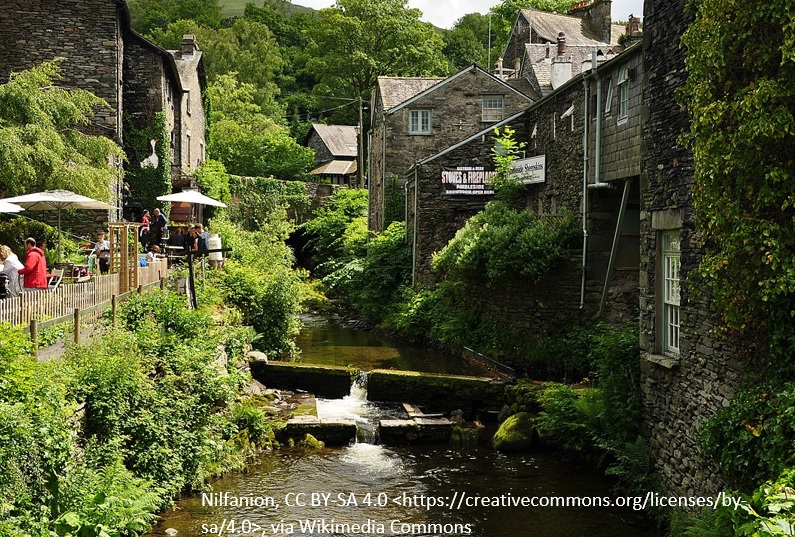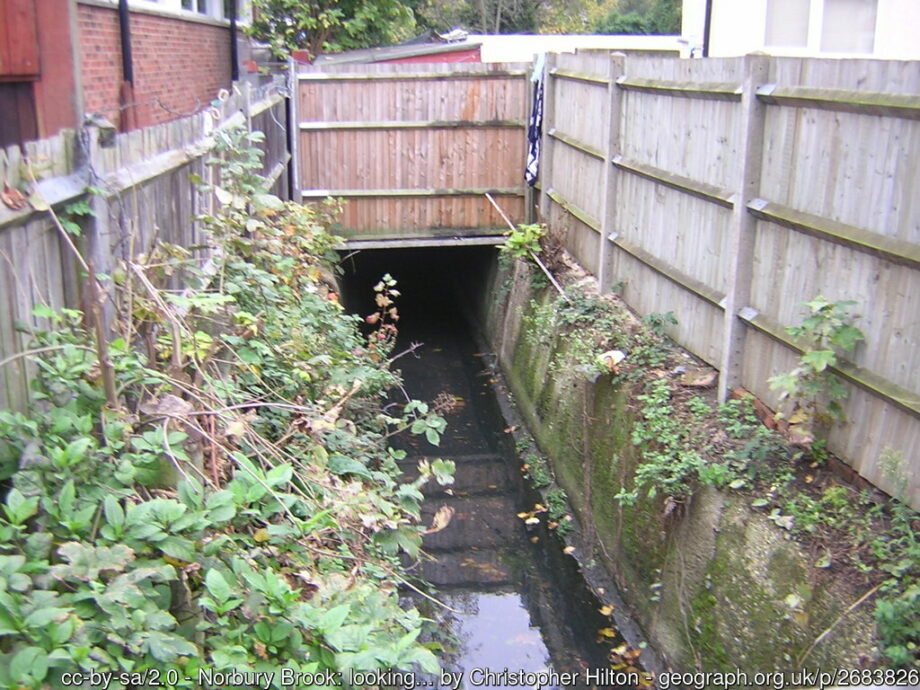This blog has been written by a member of the Newground Flood Team.
Perhaps it wasn’t your intention to live so close to a watercourse, and depending on the type, you may not even be aware that one runs under, across or forms part of your property boundary.
Purchasing property which is located near water generally comes at a premium, conjuring images of gentle streams or the local wildlife which may inhabit the area. Perhaps it wasn’t your intention to live so close to a watercourse and depending on the type, you may not even be aware that one runs under, across or forms part of your property boundary.

Image: Nilfanion/ CC BY-SA 4.0
Watercourses can be described as ‘a natural or artificial channel through which water flows’ and includes rivers, streams, brooks, becks, culverts, and ditches. Artificial watercourses are generally owned by third parties.
So, if you are buying property near a watercourse, it may be a good idea to specifically ask the conveyancing solicitor to carry out checks to cover any ownership or liability issues in respect of watercourses.
If a watercourse is located close to the boundary of the property you already own, it’s important to check the deeds of the property. The deeds are documents that prove a property’s ownership and define the property’s land boundary.
You may not be aware that a culvert that lies beneath your property as it may have been buried for a long time. The Land Drainage Act 1991 states that the owner of land through which a culvert passes is ‘responsible for maintaining the culvert to allow for the free passage of water, whether or not he is aware of the culvert’. If you are unsure about your ownership, you can check your title deeds on the land registry.
It’s worth noting that the position of a watercourse can change over time and riparian land boundaries will move with those changes too. This is known as the ‘doctrine of accretion and diluvion’ and recognises the fact that where land is bounded by water, natural processes are likely to cause changes in the boundary between the land and the water.

Norbury Brook: looking upstream at Quadrant Road cc-by-sa/2.0 – © Christopher Hilton – geograph.org.uk/p/2683826
Property owners as described above are known as ‘riparian owners’ who have certain rights and responsibilities associated with owning a stretch of a watercourse.
As a riparian owner your responsibilities include:
As a riparian owner you have the right to:
The Environment Agency is the risk management authority for main rivers, for ordinary watercourses contact your Lead Local Flood Authority (LLFA) (unitary authority / county council) or Internal Drainage Board (IDB).
Tidal rivers are treated differently, as the bed and foreshore of the river will generally be owned by the Crown. Tidal rivers have public rights of navigation and fishing.
Where riparian owners do not uphold their duties and responsibilities, RMAs have the powers to enter private land to undertake emergency work and may seek to recover costs or bring prosecutions against the riparian owner.
To report instances of flooding, issues causing an increase to flood risk, problems with a flood risk asset, potential water pollution or environmental crime incidents, you should contact the Environment Agency on their 24hr incident hotline on 0800 80 70 60.
Some flood risk assets (trash screen or culverts) may have information on them which indicates the owner of the asset or a telephone number for reporting issues directly. The owner is responsible for resolving issues with flood risk assets.
The owner of a flood risk asset which needs to be cleared regularly, may not live, or work nearby. In some cases, management companies are contracted to attend site to maintain assets or clear debris.
As a riparian owner you don’t have the right to do as you please in and around a watercourse and should seek advice about permissions and licences from the Environment Agency.
Riparian owners should note that ordinary watercourses include road side ditches; you may therefore be responsible for their maintenance where they border your property. This applies to the entire width of the channel, not just to the centre point. If flooding on the highway occurs due to an obstruction in the ditch, or drainage of the road into the ditch is impeded, the Highway Authority may exercise legal powers requiring riparian owners to clear it.
For work on or near all other watercourses you must apply for Ordinary Watercourse Consent.
Apply by contacting either:
https://www.gov.uk/guidance/owning-a-watercourse
https://www.landregistryservices.com/culverts/